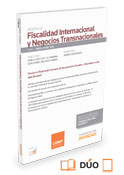
The arm’s length principle is the international standard that OECD member countries have agreed for determining transfer pricing for tax purposes in related party transactions and, most importantly, widely implemented between multinational enterprises (MNEs). Its main principle relies on determining the price between associated enterprises as if the transactions were agreed and undertaken by unrelated third parties.
This approach, although often criticized for not reflecting the actual economic reality in enterprises mainly due to poorly implemented approaches, has been the core of the international transfer pricing rules for decades. And I have to say, has provided reasonable levels of certainty (at least for most cases) to MNEs in their intragroup transactions when enough efforts have been taken for the correct definition of the key elements considered. However, the current economic environment, the practical complexity, the increasing controversy trend within the different jurisdictions, as well as the latest statements published by the OECD, could be clear indicators of (or maybe, the need for) a change in approach of the current international standard.
COVID-19 pandemic
The COVID-19 pandemic has definitely impacted the application of the arm’s length principle and hence, triggered a wide variety of transfer pricing issues.
The basic example could be a routine entity earning a steady operating profit over the years that might incur losses due to the extraordinary circumstances of COVID-19. As per the OECD guidance in regards of the practical application of the arm’s length principle in the pandemic context, the extent of the loss that might be earned at arm’s length will be determined by the conditions and the economically relevant characteristics of the accurately delineated transaction compared to those of comparable uncontrolled transactions[1].
The latter could have, at least at first glance, two practical issues from a taxpayers standpoint: (i) unavailability of public reliable comparable data and hence, not able to prove how independent enterprises have determined their conditions under the extraordinary circumstances of the pandemic, and (ii) the unique and unprecedented economic conditions do not necessarily impact all businesses on a consistent basis and therefore, even if there is data of unrelated parties, their business conditions and strategies might differ from one another i.e. disruptions in their operating models.
Given these features, the question is will tax administrations, under the application of the arm’s length principle, be able to consider all the extreme circumstances surrounding each situation on a case by case basis, by not relying only on comparable third party data (that might not be available or extremely comparable)? Full and accurate comparability analysis, focused on functions, assets and risks assumed, should go far beyond the typical and limited approach on selecting comparables, which will be especially relevant within these extraordinary circumstances. Although the answer remains uncertain, the outcome of future transfer pricing audits and adjustments for COVID-19 impacted years will definitely result in an increase on disputes and therefore higher double taxation worldwide.
New international tax framework
On July 2021, 132 members of the OECD/G20 Inclusive Framework on BEPS, after several years of discussions and very relevant publications along this period, agreed and published a statement providing the framework for the new international tax rules by a two-pillar solution to address the tax challenges arising from the digitalization of the economy as well as the key components of each pillar. The detailed implementation plan is expected to be finalized by October 2021, with changes to be effective in 2023.
Very briefly, the two-pillar approach consists of:
- Pillar One aimed at the reallocation of profits for the largest MNEs by considering two components: Amount A, that would provide a new taxing right to market jurisdictions, allocating a portion of residual profit based on a formulary approach and, Amount B, that is intended to simplify and streamline the application of the arm’s length principle to routine marketing and distribution activities.
- Pillar Two seeks to put a floor on tax competition on corporate income tax through the implementation of a global minimum taxation regime.
The reallocation of profits, as stated by the Deputy Director of the OECD’s Centre for Tax Policy and Administration on a Tax Policy Center event, implies partially moving away or setting aside the traditional transfer pricing rules for allocating profits. Therefore, the proposal for a new international tax framework can be argued to follow a direction towards a formulary approach rather than the application of the arm’s length principle itself.
As commonly discussed, the arm’s length principle do suffers from theoretical and practical limitations, that have been aggravated over time and sometimes, even increased the complexity and administrative efforts to comply with the principle – especially when too simplistic approaches are consider within a comparability analysis. Not to mention, the legal uncertainty that can sometimes be triggered by the different interpretations of tax administrations of two states. Yet, the application of the arm’s length principle when properly applied might seem more straightforward as it does not demand a full-scale tax cooperation, but rather a bilateral application.
And so I wonder, does a formulary approach tackle the limitations of the arm’s length principle? If so, are we on the path of the end of an era? Or would it make sense to maintain the application of the arm’s length principle by substantially improving its rules and assuring a proper and full scope approach? Whatever the response, I think we can all agree than an updated framework for the current economic circumstances is mandatory.
The views and opinions expressed in this article are those of the author and do not necessarily reflect or can be attributed to any person of her professional surroundings.
[1] Paragraph 40, OECD Policy Response to Coronavirus (COVID-19) Guidance on the transfer pricing implications of the COVID-9 pandemic, 18 December 2020.



